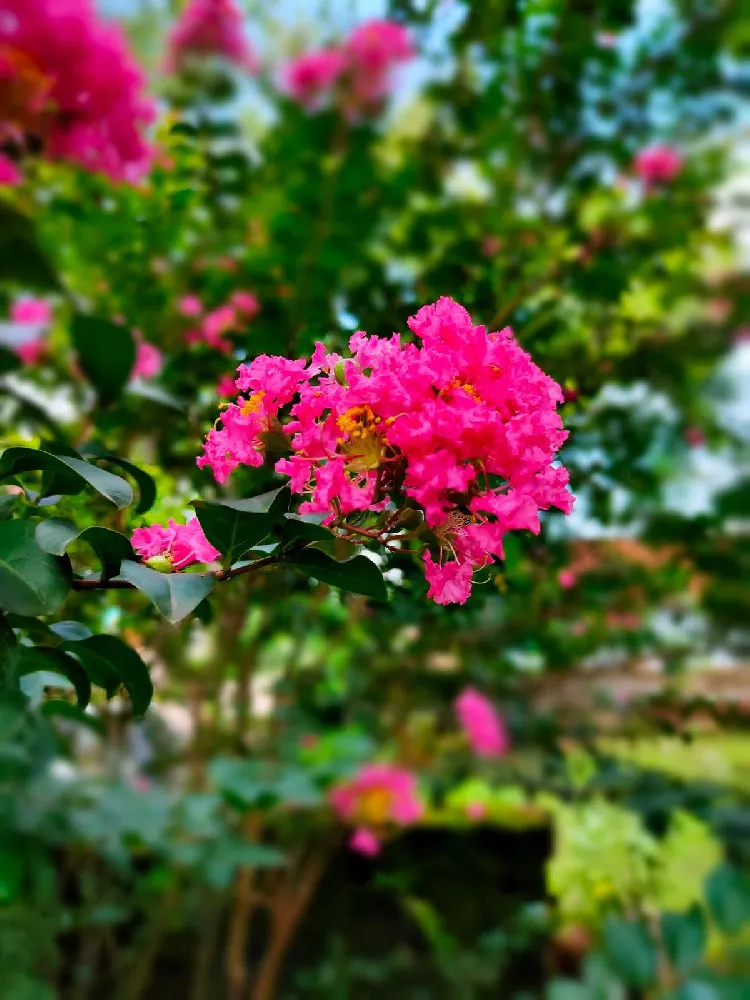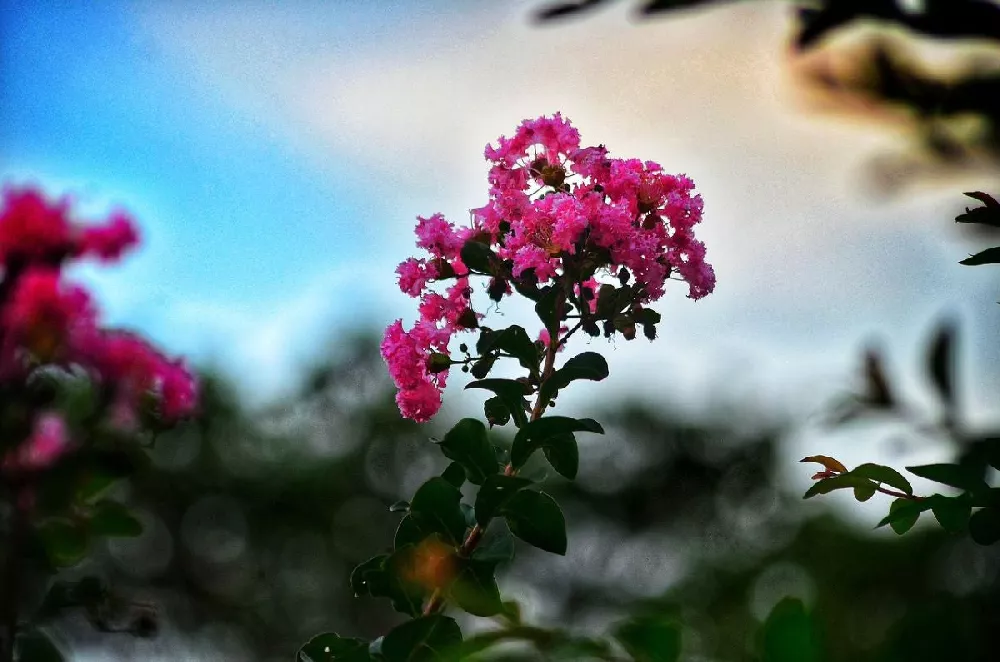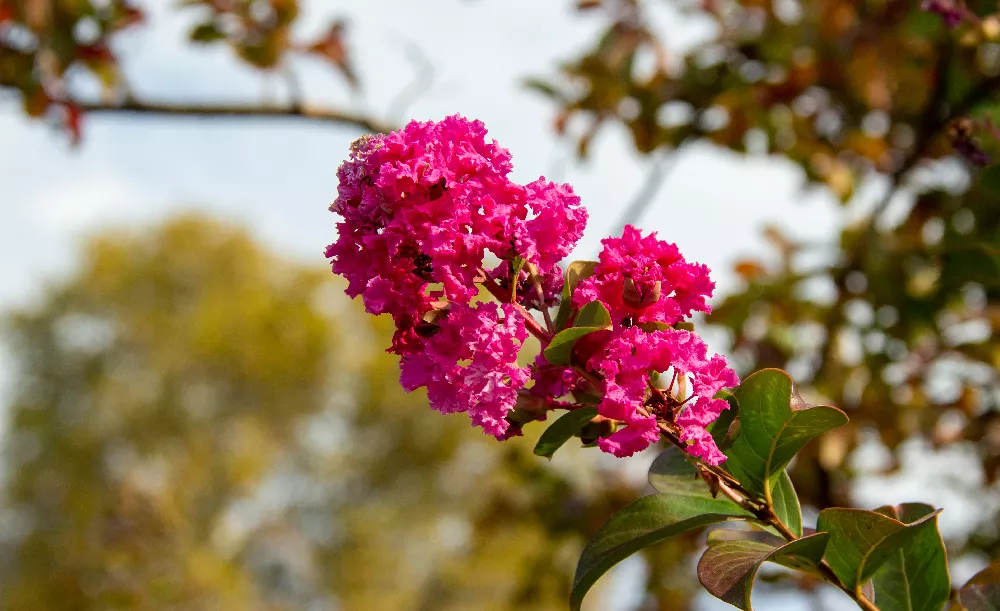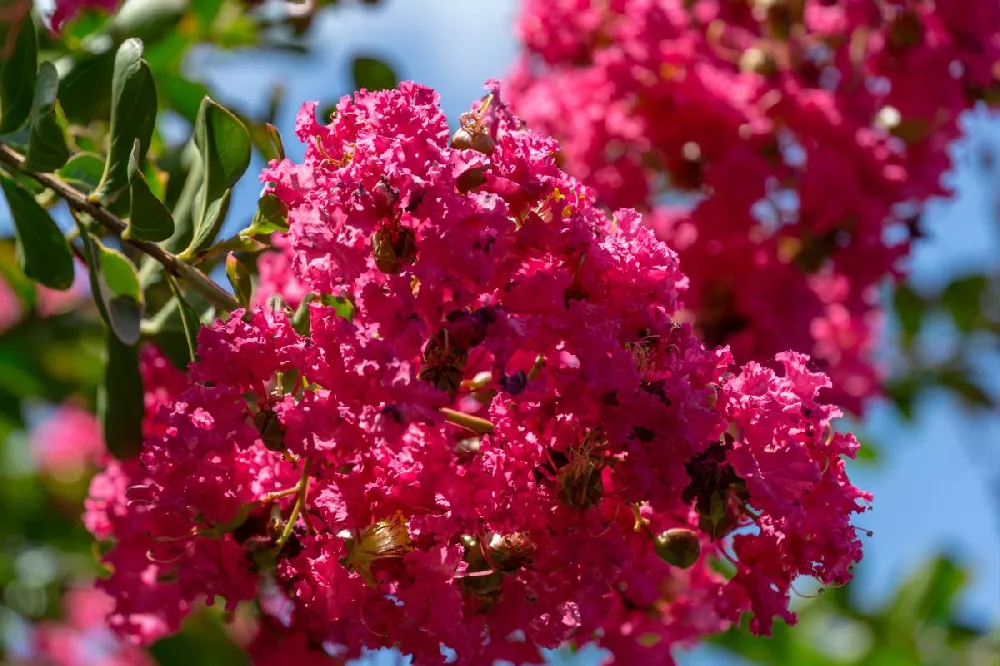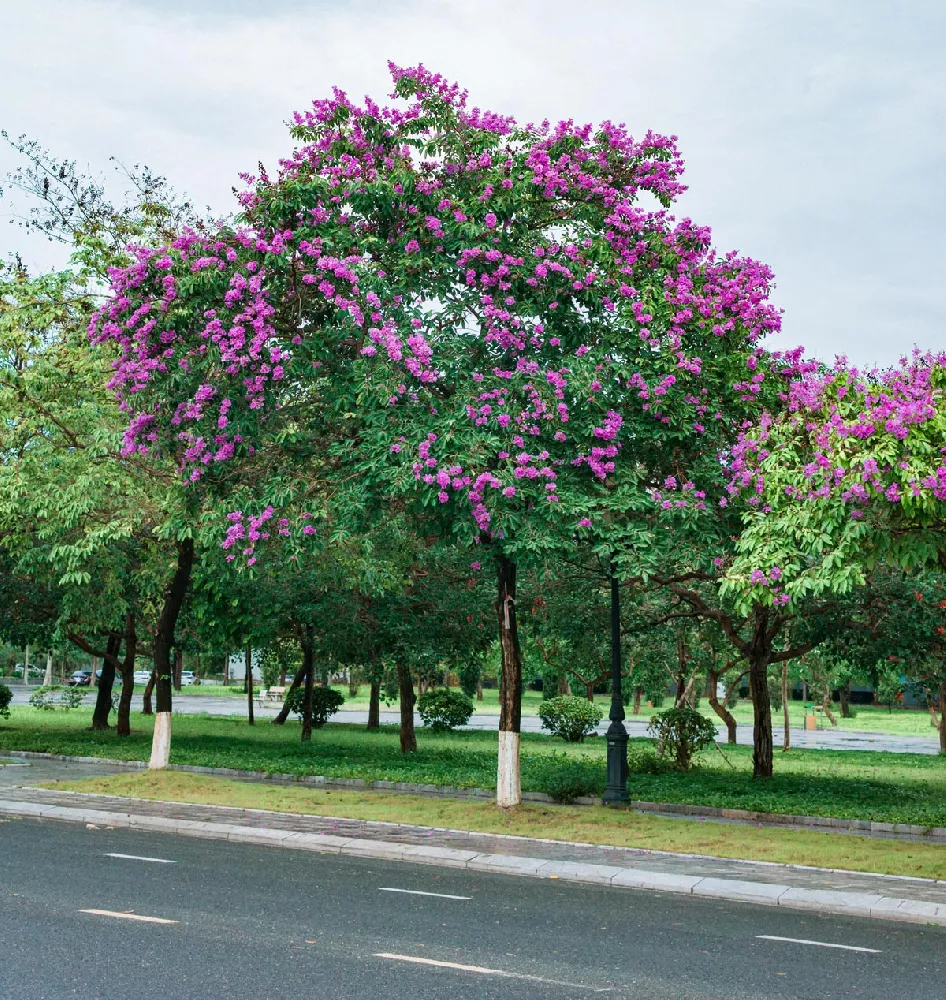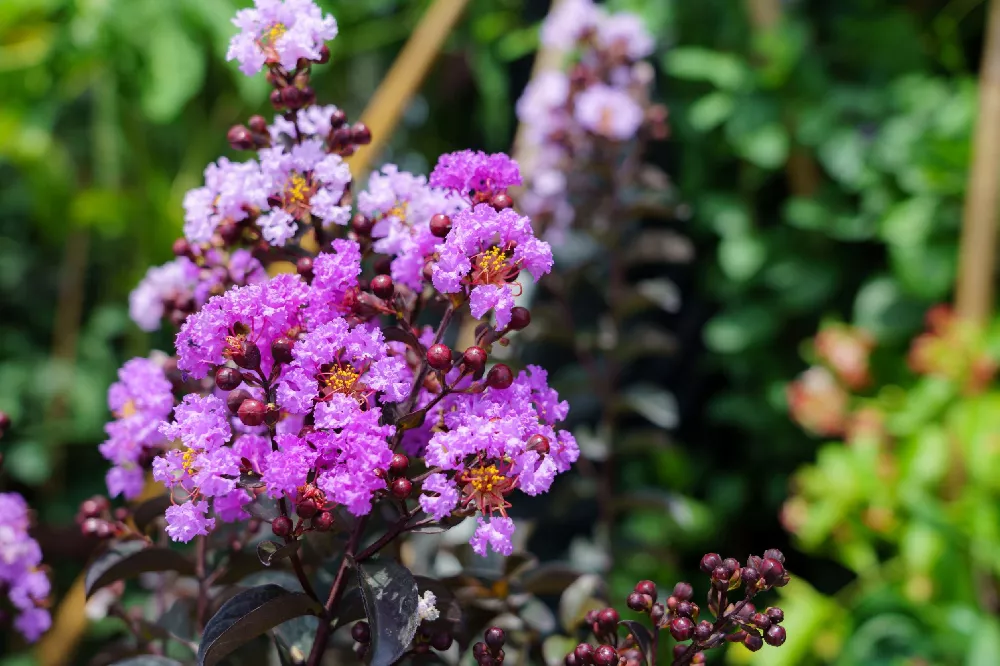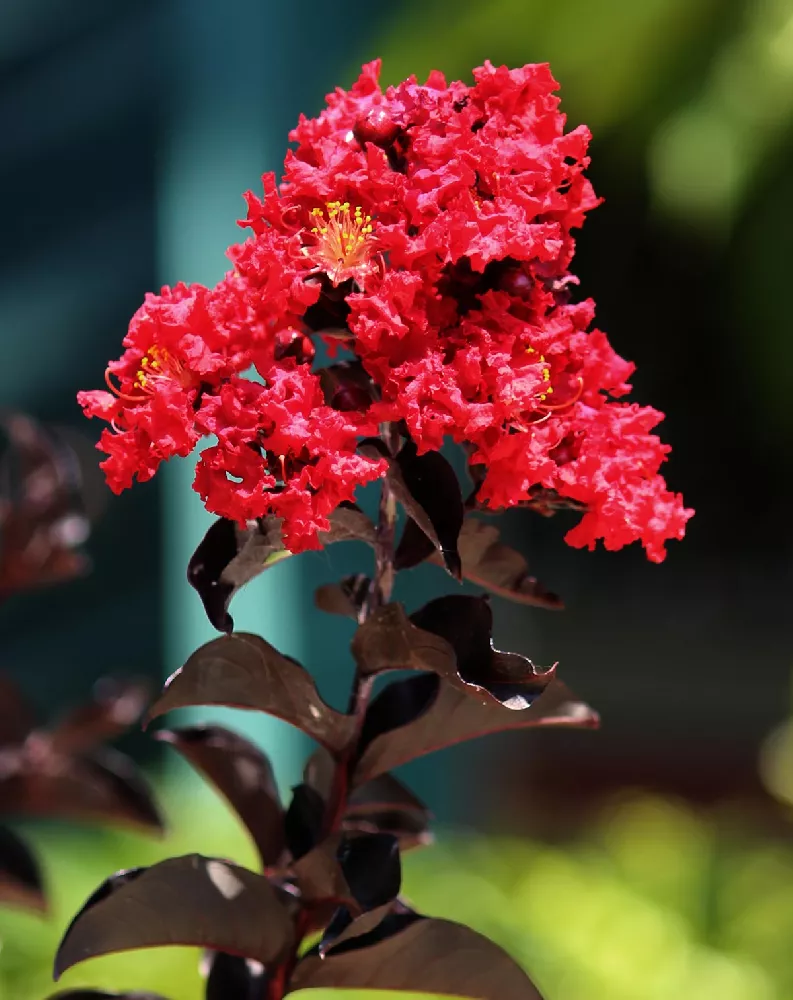- Home >
- Ornamental Plants >
- Pocomoke Crape Myrtle
Pocomoke Crape Myrtle for Sale - Buying & Growing Guide
- Ships in 1-2 days
- 1-Year Warranty Eligible
- Pots or accessories are not included unless specified in the product options.
Shipping Details:
Once your order is shipped, you’ll receive an email with a tracking number and estimated delivery date. Most orders ship immediately, but some items are seasonal and may only ship in spring or fall. These products are noted on the website.
Many gardeners love the famous blooms of a crape myrtle tree but lack the space in their yard to grow one. Thankfully, the cultivar known as the “Pocomoke Crape Myrtle,” or Lagerstroemia indica 'Pocomoke,' has a rounded form that is small enough to fit in most spaces, including containers. This plant will also reward you each year with a set of bright pink flower clusters that are as impressive as any other flower in your yard.
- This crape myrtle grows as a small to medium-sized shrub.
- The Pocomoke Crape Myrtle Tree blooms with bright pink flower clusters.
- This plant can grow well in the ground or as a container plant.
Plant Care
Sunlight

This plant will grow best when it receives at least six hours of sunlight per day.
Watering
Water this plant about once per week throughout the growing season once it is established.
Fertilizing

Fertilize your Pocomoke Crape Myrtle once per year in spring with a balanced fertilizer
Planting and Care
Planting instructions
You can plant a Pocomoke Crape Myrtle Tree by digging a hole in the ground that is as deep as the root ball is tall or by planting it in a medium to large garden container. In either case, the soil in which this plant grows should be slightly acidic and well-draining. However, this plant can adapt well to many soil types, including clay, sand and loam. You should also select a growing area that receives at least six hours of sunlight a day if you want your Pocomoke Crape Myrtle to perform at its best.
Watering and nutrients
During the first few months of growth, you should water your Pocomoke Crape Myrtle Tree about twice per week or more. After that, you can water this shrub about once per week during spring, summer and fall. Alternatively, you can set your watering frequency based on soil observations. If you choose this route, you should water this plant whenever you notice the first few inches of soil have dried out. Fertilizing for this plant is straightforward, as all you’ll need to do is apply a balanced fertilizer once per year in spring.
Pollination
The Pocomoke Crape Myrtle Tree has an excellent ability to attract many lovely pollinators to your garden, including honey bees and other insects. This plant blooms in mid-summer with many flowers and is also a self-fertile plant, meaning that you need only one to conduct pollination successfully. However, those who grow the Pocomoke Crape Myrtle Tree rarely concern themselves with pollination since the fruits of this plant are neither commonly eaten nor do they have ornamental value.
Pruning
The ideal time to prune a Pocomoke Crape Myrtle is during late winter and early spring. Since these plants set their flower buds on new growth, pruning at this time means that you won’t need to worry at all about removing the coming season’s blooms. However, pruning for shape is often not needed for the Pocomoke Crape Myrtle as it develops an attractive rounded form on its own and does not grow aggressively enough to crowd or outcompete other plants in your garden.
Pests, diseases and animals
There are several disease threats that most crape myrtles face. Many of the most harmful of these diseases are caused by a fungus, including black spot and powdery mildew. Thankfully, the Pocomoke Crape Myrtle Tree is very resistant to powdery mildew compared to other crape myrtle varieties. However, this plant remains vulnerable to pest infestations. Some of the most common insects that may harm this plant are scale insects and aphids, but Japanese beetles and ambrosia beetles can cause issues too.
Achieving maximum results
Overall, the Pocomoke Crape Myrtle has decent cold hardiness for a crape myrtle. However, when this plant grows at the northern end of its natural range, including hardiness zones five and six, it can experience winter dieback. If this occurs, then you should simply prune out the damaged parts of the plant when you perform your annual pruning in late winter or early spring. Regardless of cold exposure, you may also want to perform an additional pruning later in summer to deadhead the spent flowers and encourage future blooms.
FAQs
Where does the Pocomoke Crape Myrtle come from?
The Pocomoke Crape Myrtle is a cultivated plant that came into being at the United States National Arboretum. Development of this cultivar resulted in a crape myrtle that is smaller than most others and well-capable of avoiding powdery mildew, which afflicts many related plants. In 1998, the National Arboretum released the Pocomoke Crape Myrtle, after which it entered the nursery trade and became one of the most popular small crape myrtle varieties.
Why are the leaves of my Pocomoke Crape Myrtle turning yellow?
At no point in the growing season should the leaves of your Pocomoke Crape Myrtle be yellow. If you notice that the foliage of your plant is beginning to turn yellow, it is likely a sign of chlorosis. Chlorosis occurs when a plant that prefers acidic soils grows where the soil pH is a bit too alkaline. If this occurs for your Pocomoke Crape Myrtle, you should amend the soil to make it more acidic or transplant it to another location.
Does the Pocomoke Crape Myrtle have a fall color?
The Pocomoke Crape Myrtle Tree not only has lovely fall colors, but it also offers interesting foliage colors throughout the entire growing season. In spring, the leaves first emerge with a slight hint of maroon before they turn to a dark, lustrous green. That deep green makes a perfect backdrop for this plant's bright summer flowers. Once fall arrives, the leaves will turn a bronze color with hues of red.
Compare Similar Products
You can't add more Product Name - Product size to the cart.
OK